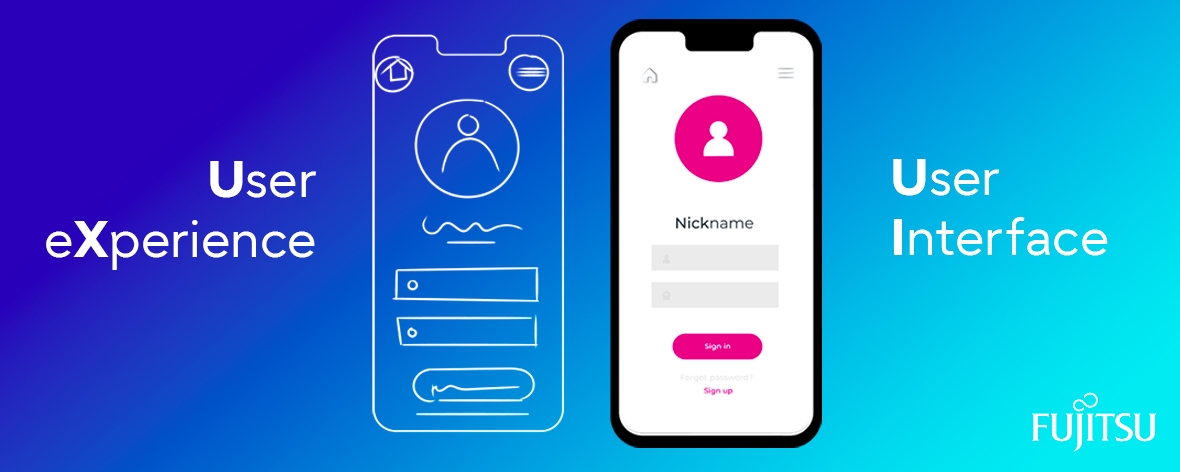News
UX versus UI: What is the real difference?
What is UX Design?
As Steve Job stated “Design is not just what it looks like and feels like. Design is how it works.” Indeed, UX represents your global experience as a user within the various communication media of your company: whether it is a product, a service, a web or mobile interface, a touch screen, or any other format. This experience does not limit itself to graphic and textual elements. By “design”, we mean the “conception” of the user experience rather than its visual creation. To make UX Design, we consider all the expectations, needs and potential wishes of the users, clients, employees, or collaborators, according to the context.
For instance, while conceiving an application in the healthcare field, the UX Designer will make sure to put himself in the shoes of a patient, who may be stressed-out. He will then suggest a pragmatic approach enabling the patient to take quick actions (emergency calls, appointment scheduling…) and offer him consistent content.
At Fujitsu, we conceive UX Design in 4 great essential phases to define the Experience:
- The analysis and research phase: benchmark, market analysis, existing ecosystem analysis, needs understanding, interviews, personas, customer journey map…
- The conception and ideation phase: brainstorming, user flow, workshops, wireframes, information architecture…
- The creation and prototyping phase (where the UI Designer comes into play): artistic direction, design, graphic chart, colors, design system…
- The testing phase: user tests and interviews, A/B testing, statistics analytics, …
UX reflection starts at the very beginning of a project and covers the UI job. Our UX designers are creators armed with cognitive sciences and ergonomics methodologies.
What is UI Design?
When it turns to UI Design, Martin Leblanc tells us: “A User Interface is like a joke. If you have to explain I, it’s not that good.” UI covers all the visual elements enabling interaction with your interface. This is the visible part or the tangible part of the product. Overall, the UI Designer is a “web designer who takes care of the usability of the interface.” His role is to ensure the readability, accessibility, attractivity and ease to use the website. This means we take into account the habits, the tastes of your users, or even anticipate them on the basis of user tests:
- Typography, colors, icons…
- Respect of the graphic chart or design system in place to create a coherence or homogeneity
- Attractivity of the interface regarding the visual identity of the brand
- Respect of the accessibility to offer an inclusive experience
- Grid and space management
Taking again our healthcare application as an example, the UI Designer, on his side, will make sure the iconography is clear, the size of the fonts legible, the colors reassuring and that the emergency buttons are visible and recognizable at the first glimpse.
A necessary complementarity
Although the two fields are distinct, UX and UI are complementary and necessary to create an adequate user experience.
Without respecting all the principles mentioned above, the user will have a potential frustrating experience, with negative consequences for your company. That is why there is a consistent communication between our UX and UI teams to offer our clients and their users an attractive and intuitive final interface.
Eager to meet us to know more? Contact us!
